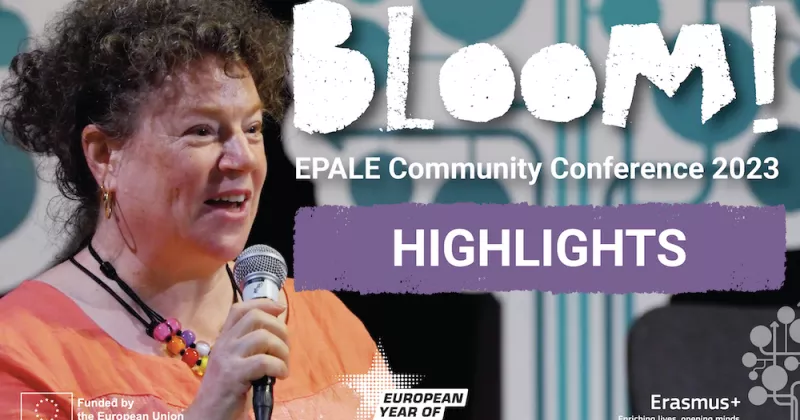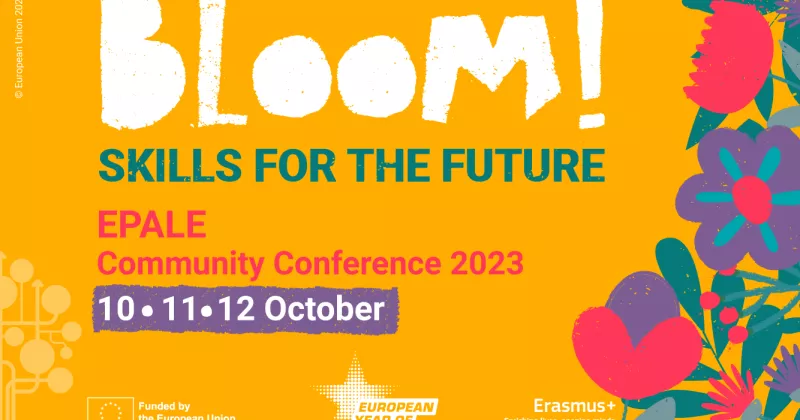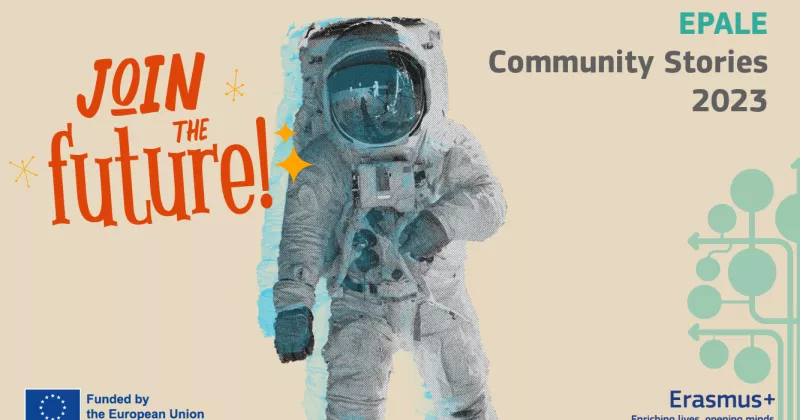What is Neuroandragogy?
Today, the development of adult education is determined by the interaction of several branches of science, as a result of which effective pedagogical solutions are developed. Such collaboration results in new interdisciplinary sub-disciplines, such as neuroandragogy, combining elements of neuropsychology, neurophysiology and neuroanatomy with adult education.
In his book, No One Is Too Old to Learn, Wilson (2006, 2) reveals that neuroandragogy involves research into adult brain function, adult intelligence, and adult education. Neuroandragogy studies both the anatomy and physiology of the adult brain and the cognitive functions of the brain systems involved in intelligence, memory and learning.
The developers of the Erasmus+ project “Neuroandragogy against Exclusion” (2019) note that the modern adult learning process must be based on current information about the functioning of the adult brain and changes in it at different stages of human life.
Adult learning is linked to the interests, experiences and culture of each adult learner. This creates a need for flexible adaptation of learning objectives, pedagogical approach, content, pace and tools for each adult education participant.
Neuroandragogy formulates general principles for the activities of adult education participants and teachers, which can significantly increase the effectiveness of adult education.
The American University’s (2021) blog on the use of neuroscience in education highlights the following teaching principles:
1. Active involvement
Learning outcomes are greatly influenced by a person’s physical involvement in learning. Adults should be encouraged to move around the audience safely to interact with others. Create a free atmosphere through various release tasks, such as the morning meeting.
The morning meeting task has four consecutive parts:
- Greeting – participants greet each other by addressing each other, shaking hands, performing some movements, singing, etc.
- Sharing – participants share news or information about themselves or their own learning; they also ask and answer each other’s questions about thoughts, feelings and ideas related to learning.
- Group work – everyone together does a short task (Icebreaker) that unites the group.
- Morning message – the teacher displays a pre-written message on the board/screen related to the lessons of the day. An example is the quote “Use it or lose it!”.
2. Positive emotions
The educator should provide participants with feedback that inspires growth. A safe environment must be created in which the adult feels accepted and respected.
3. Group work
Group work allows participants to learn from each other. It helps to develop an understanding of what is not clear/perceptible from what the teacher is saying.
4. Mutual learning
Mutual learning makes it easier for adults to perceive new content. Adults have the opportunity to discuss the material, compare their understanding and ask questions. Mutual learning reduces stress, as it takes place according to the needs of each adult. By presenting the material to their group members, everyone has the opportunity to repeat what they have learned and make sure they understand/learn the topic.
5. Practice
Training should provide the opportunity to regularly repeat the acquired knowledge, demonstrate skills in real-life situations and make mistakes. This is a much more effective way of learning than simply memorizing information. Participants gain a more detailed picture of the practice of solving real-life problems.
6. Limited time for lectures
Cooper and Richards (2016, 376) point out that the duration of adults’ continuous concentration, which is about 15–20 minutes, should be taken into account when organizing classes. Therefore, a 15–20-minute lecture should be followed by discussions, pairs and individual work, which involves the active involvement of all participants.
7. Meaningful and personally important information
Adult learners remember information better if they are actively involved in the activity. Content that is related to the adult’s daily life, such as work tasks, becomes important and meaningful.
Specialists of the Didactics Center of the Media University of Stuttgart, Hempel and Seidl (2014), emphasize the principles of adult learning (generate interest and curiosity, clarity of learning objectives (unified approach): manage the “red thread” (know the system and structure), link content — give an overview - use deep learning, repeat the most important, use several senses, use emotions, have breaks, implement an individual approach and provide feedback, which are derived from the findings of neuroscience research.
Neuroandragogy offers effective teaching and learning methods and tools based on scientific evidence of adult brain function. For example, the task of involving and unleashing adults is the Elevator Pitch, which is based on knowledge of neuroscience.
The aim of this task is to engage in teamwork, develop skills quickly (during the elevator journey) and present your idea convincingly. The educator divides the participants into groups of five and asks them to identify a problem that is important for the area that the participants are learning and that can be solved. Participants are given three minutes to discuss. In the next step, the educator asks the participants to develop a product or service that can help solve the identified problem. The group prepares a 60-second presentation for their solution! Five minutes are set aside for group work.
“Elevator speech”
I. Procedure
1. Participants are divided into groups (five people in each group).
2. The group should draw up a short summary of what they consider to be the most effective method of promoting the acquisition of specific content (5–7 min).
When creating a summary, answer the following questions:
What is this method?
What problem does it solve?
What is special about your proposed method, and why would others want to use it?
3. One of the groups spoke in front of the audience with a 60-second “elevator speech”.
J. Imilkowski (2018) points out that elevator speech creates a relaxed atmosphere and encourages participants to be open to different ideas. Thinking together to achieve a single goal stimulates the production of oxytocin in the brain. The elevator speech provides an opportunity to practice answering questions such as “What happens if ...?” in a safe environment. Oxytocin affects our social behaviour—it decreases fear and increases courage, curiosity and the desire to contact others.
Oxytocin (“social hormone”) plays an important role in the regulation of social behaviour and is involved in various processes of human social cognition (Wagner & Echterhoff, 2018).
Previously widely used approaches, such as sequential learning of grammar rules in foreign languages and lectures in which the content of a theory was told, are becoming ineffective nowadays. The main findings of the World Economic Forum study (2021, 2) indicate that current learning systems do not provide flexible adaptation to the work that people will need for lifelong learning. In The Future of Jobs Report (World Economic Forum, 2020), active learning and learning strategies are at the top 10 of the key skills that will be needed by 2025, alongside analytical thinking and innovation. This indicates that it is important for an adult education teacher to know and use effective teaching methods. It is knowledge of neuroandragogy that helps to choose the appropriate methods and tools of adult learning.
References:
American University. (2021). What Is Brain-Based Learning? Retrieved from: https://soeonline.american.edu/blog/brain-based-learning
Cooper, A.Z.; Richards, J.B. (2016). Lectures for Adult Learners: Breaking Old Habits in Graduate Medical Education. AAIM Perspectives. Retrieved from: https://www.amjmed.com/article/S0002-9343(16)31217-7/pdf
Dyer, A. (2019). The Neuroscience of Adult Learning: A Talk with Phillip Campbell. Boston Consulting Group. Retrieved from: https://www.bcg.com/publications/2019/neuroscience-adult-learning-talk-with-phillip-campbell
Friederichs, A. (2018). How the Adult Brain Learns: The Importance of Creating Enriched Environments When Teaching. UNBOUND. Retrieved from: https://unbound.upcea.edu/innovation/contemporary-learners/how-the-adult-brain-learns-the-importance-of-creating-enriched-environments-when-teaching/
Hempel, A. & Seidl, T. (2014). 11Prinzipien zum gehirngerechten Lehren und Lernen. Didaktikzentrum, Stuttgart. Retrieved from: https://hdms.bsz-bw.de/frontdoor/deliver/index/docId/2118/file/Hempel_Seidl_11_Prinzipien_zum_gehirngerechten_Lehren_und_Lernen_online.pdf
Społeczna Akademia Nauk (2018). Neoroandrogogy against exclusion. Retrieved from: http://www.neuroandragogy.eu/index.php/about-neuroandragogy/
Wagner, U.; Echterhoff, G. (2018). When Does Oxytocin Affect Human Memory Encoding? The Role of Social Context and Individual Attachment Style. Frontiers in Human Neuroscience. Retrieved from: https://www.frontiersin.org/articles/10.3389/fnhum.2018.00349/full
Wilson, C. (2006). No one is too old to learn. Neuroandragogy: A theoretical perspective on adult brain functions and adult learning. Lincoln, NY, iUniverse.
World Economic Forum (2021). Building a Common Language for Skills at Work A Global Taxonomy. Retrieved from: http://www3.weforum.org/docs/WEF_Skills_Taxonomy_2021.pdf
World Economic Forum (2020). The Future of Jobs Report 2020. Retrieved from: http://www3.weforum.org/docs/WEF_Future_of_Jobs_2020.pdf
Nóta tráchta
Oma kogemusest liftikõnega,…
Oma kogemusest liftikõnega, saan öelda, et tõesti, see toimib!
Kas ir neiroandragoģija?
Paldies par iepazīstināšanu ar neiroandragoģiju!
Neiroandragoģijā formulētie principi pieaugušo izglītības dalībnieku izglītības efektivitātes paaugstināšanai, manuprāt, ir tikpat labi attiecināmi arī uz bērnu un jauniešu mācīšanās prasmju apguvi (kā nekā - viņi arī nākotnes pieaugušie...).
Aktīva iesaistīšanās. Tas vienmēr dos efektu, jo ļauj apjaust, ka es esmu šeit un mans viedoklis ir svarīgs (arī, ja mācības notiek attālināti!). Neformālākai atmosfērai var izmantot ledus laušanas spēles.
Pozitīvas emocijas. Pieredzēju lielisku attālināto semināru ciklu, kuru pasniedzēja vienmēr iesāka ar deju. Sākumā man šķita grūti iedomāties, ka es varētu piecelties un dejot līdzi (ar dejošanu esmu uz Jūs), bet pozitīvisms ir lipīgs! Redzot citus aktīvi iesaistoties, cēlos kājās un kustējos līdzi! Tiem, kuriem nebija tādu iespēju, ievēroju platu smaidu sejā, kas liecināja, ka gūt pozitīvas emocijas var arī skatoties uz priecīgiem cilvēkiem.
Grupu darbs un savstarpējā mācīšanās. Tā ir pieredzes un viedokļu apmaiņa, tuvāka grupas dalībnieku iepazīšana. Svarīgi uzklausīt un pieņemt dažādus viedokļus. Grupu darbos var lieliski izmantot atvērta tipa jautājumus un ļaut katram pašam nonākt pie savas atziņas.
Prakse. Šis varētu būt viens no būtiskākajiem aspektiem pieaugušo izglītībā tiem, kuri vēlas apgūt ko jaunu. Būtu vērtīgi jau laicīgi saprast vai gaidas sakrīt ar realitāti. Kāpēc gan nevarētu būt atvērtās Ēnu dienas, kur jebkurš interesents varētu palūkoties uz interesējošo profesiju?
Ierobežots laiks lekcijām. Mani izbrīnīja pieauguša cilvēka koncentrēšanās ilgums. Šķita, ka pieaugušie spēj noturēt nedalītu uzmanību ilgāk (30-40 minūtes). Tātad būtiski svarīgu saturu sabalansēt ar darbu grupās un pauzēm.
Kas ir neiroandragoģija?
Paldies! Īpaši par teikumu: Mācībās ir jāparedz iespēja regulāri atkārtot apgūtās zināšanas, demonstrēt prasmes reālās dzīves situācijās un kļūdīties.






Täiskasvanuõpe
Olen andragoogika tudeng ja lugedes artiklit neuroandragoogikast, hakkasid tekkima seosed meie õpingutega. Neid põhimõtteid ja võtteid (aktiivne kaasamine, positiivsete emotsioonide loomine, rühmatöö, vastastikune õppimine jne) kasutavad Tallinna ülikooli õppejõud meid harides. Sõnad ja teod käivad käsikäes!
Neuroandragoogikast ei olnud ma enne kuulnud, nüüd siis uus teadmine ja saan teemaga edasi tutvuda.
Aitäh!